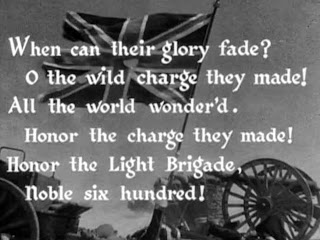I start with an apology. This is a response to an argument that ChrisM put forward in an email. I'll cite below, but there is a pretty severe power imbalance between a correspondent and a Big Giant Blog Writer. On the other hand, I've got long-mouldering Evidence to put out there. So there's that.
So. You say you want to grow up to be First Sea Lord.
I'm listening. I certainly don't want to be the nay-sayer. It's a colourful title that comes with a peerage, a nice pension, and the prospect of interlocking directorates in profitable publicly-traded corporations. What's not to like? A young naval officer should aim for the title. (Unless he is a doctor, accountant, or instructor. Or an engineer? I'm not sure about the last. Have we decided whether they're supposed to aspire to be Engineer Vice-Admiral, First Sea Lord, or both. Will we change our minds?)
And you did such a splendid job of picking your parents, too! Famous, influential at court, an uncle who is an admiral himself, carefully edited out of your Wikipedia biography to avoid clouding the issues. But there's one small roadblock and one huge. The first roadblock is that you've decided against the gunnery specialisation. You've been at Dartmouth long enough to see the numbers that every young man crunches. Your chances are better in Gunnery. That being said, we all know that it is a small roadblock, because if you are good at a valuable specialisation, you will quite likely advance against a weaker set of competitors. Deciding that you are stronger than, say, your Torpedo rivals is harder, although not so much now that they've been handed electrics. If you are doing your fellows' homework, as opposed to the reverse, you have as good a chance as any other young man who has an uncle for an admiral. We'll strike that last part if you go for the Torpedo branch.
Oh? Aviation? Hmm. Well, I can see that. You came of age during the war. You were bred up on the romance of the knights of the air, especially the ones who come in navy blue: Bowhill, Collishaw, Dickson, Bell-Davies, Longmore.
But here's the big roadblock. Fancy their fame? Too bad. You see, you were born in 1903. The war to end all wars ended before you were ready to end all wars yourself. Those knights of the air? You will never be one of them. Combat piloting is a young man's game, and there is almost exactly zero chance of a shooting war while you are young enough to fly the fleet planes of your generation. You will lust to get into a Nightjar,
and beat up fields or harbours or flight decks or launch rails, or whatever we end up using, on one of these
You'll be the "old man" of a squadron of these
and you could lead your young men into battle in it. I do not think that likely, however. There will be another war. This peace is a weeping wound on the international body politic, but the nature of the wound will be to require a long half-healing before we are ready for war again. I will say twenty years, less two months, of course, so that the young men and horses can finish the harvest. As long as I am letting the past be the guide to my predictions, I will guess that the next war will go one year longer than the last, because men are getting madder in these latter days. In September of 1938, you will be 35 and a commander. In September of 1944, you will be a captain, looking for your flag. I hope for your sake that you will win your way through the mean trench fighting of postwar retrenchment to three more promotions, but I do not give you long odds.
So that's my cautionary. I'll leave it to this historian of the next century who has just popped by in his Collingwoodian time machine to give you some more solid retrospective insight.
.JPG)


